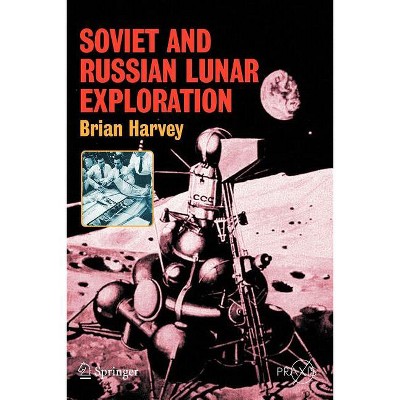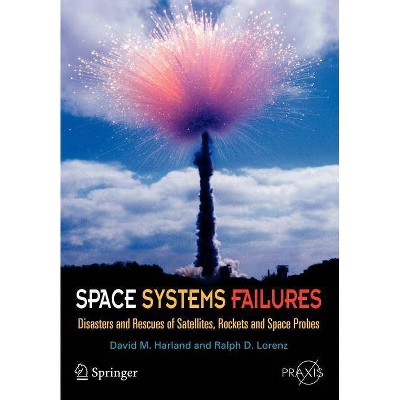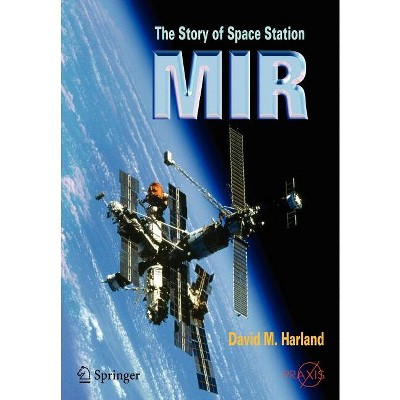Sponsored

Robotic Exploration of the Solar System - by Paolo Ulivi & David M Harland (Paperback)
In Stock
Sponsored
About this item
Highlights
- Provides a comprehensive review of the exploration of the Solar System Focusing on the technology of the robotic space probes that made it possible Including missions which - for a variety of reasons - were never completed
- About the Author: The Second World War left among its many and painful heritages a new technology, ballistic missiles, that was to change the world, providing a way to carry into space instruments, satellites and probes that revolutionized science and technology.
- 536 Pages
- Technology, History
Description
About the Book
This fascinating book is a detailed history of unmanned missions that have explored our solar system. The subject is treated wherever possible from an engineering and scientific standpoint and includes technical descriptions of the spacecraft, their mission designs and their instrumentations.
Book Synopsis
Provides a comprehensive review of the exploration of the Solar System
Focusing on the technology of the robotic space probes that made it possible
Including missions which - for a variety of reasons - were never completed
Review Quotes
From the reviews:
"This book ... presents the accomplishments of robotic exploration of the major planets and their moons from Mercury to Neptune. Ulivi and Harland do a splendid job describing observations made using these ... 'robots' to take pictures and explore the infrared and radio emissions, aurora, magnetic fields, and magnetospheres of these planets, their satellites, and the interplanetary medium. ... More than 46 pages of references, further readings, excellent photographs and extensive illustrations, full author list, 6-page glossary, and 10-page index. Summing Up: Recommended. All levels." (W. E. Howard, CHOICE, Vol. 45 (8), 2008)
"Robotic Exploration of the Solar System would address events that had happened over the period from 1957 up to the present day. ... this is a fantastic book - there is much in it that I, as a devotee of the subject for longer than either of the authors, can draw from it. It really is encyclopaedic in its coverage and is a wonderful work for old timers ... and for students, new to the field, to consult to get up to speed." (Colin Pillinger, The Observatory, Vol. 128 (1203), 2008)
"The best book I read so far on space exploration. ...The combination of Harland the historian, and Ulivi the astronomer ... make this an outstanding contribution. First, this book describes the state of the knowledge of the solar system just before space exploration begins. Second, this book is comprehensive, in that it includes US, European and Soviet/Russian contributions. ... An excellent basis for those who are looking for a global view of this part of the history of science." (Patrick Haubrechts, amazon.com)
About the Author
The Second World War left among its many and painful heritages a new technology, ballistic missiles, that was to change the world, providing a way to carry into space instruments, satellites and probes that revolutionized science and technology.
Prior to launching artificial satellites, both the then Soviet Union and the United States developed more powerful intercontinental missiles with a range of thousands of miles. In the 1950s, the Soviets designed the huge 8K71 "Semiorka" (little seven, after the military designator R 7), a single staged rocket equipped with four large boosters and able to carry an heavy thermonuclear warhead to the continental US. In the USA, competition between the different armed forces prevailed, and the Army developed the medium range Redstone and Jupiter missiles, whilst the Air Force developed the Thor and two different ICBMs, Atlas and Titan and the Navy developed the Polaris submarine launched missiles.
The potential of all of these rockets to boost spacecraft were huge, but while in the Soviet Union it was decided to modify an 8K71 to carry a scientific payload into space, the United States decided that the Navy would develop a tiny new rocket called Vanguard, specifically designed for the task. This decision was to have grave repercussions: on 4 October 1957 the Soviet Union launched its PS-1 satellite, better known as Sputnik, which rocked the USA. This was compounded a month later by the launch of the PS-2, carrying the dog Laika. Following the explosion of the first Vanguard on December 6, the US Army then had the task to restore the American confidence by successfully carrying Explorer 1 into space on 1 February 1958 using the modified Redstone rocket called Juno 1. During the same year, the superpowers started working on new versions of their missiles able to carry small payloads to the Moon and, potentially, to the near planets. The space race had begun.

















